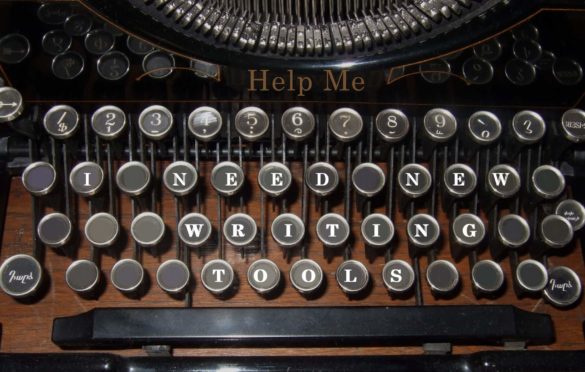I
f you want to write a script, and finish it, story outlines are helpful. Why? Because once you have waded even knee-deep into the writing, it’s easy to lose sight of things. Even worse? Predators named fear and self-doubt will be stalking you.
Yet, there is a tool that can spare you this fate. The story outline – it is going to be your machete and your map.
If you understand and use this ONE tool, I promise you'll never get lost in that jungle again.
Freebie: Story Script Outline Template
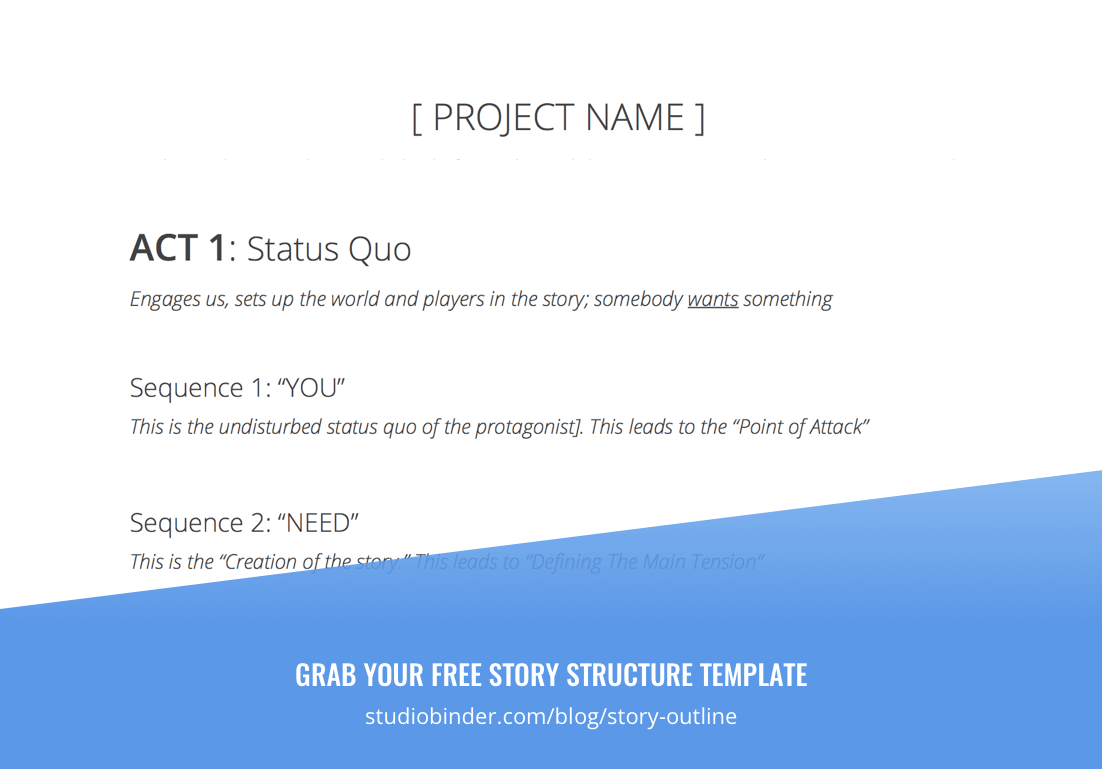
Download your FREE story script outline template.
Just enter your email address and we'll instantly send it to you!
Story Outline that Works
1. Why this story outline template?
That's a very good question.
There have been countless volumes written on how to write a story. From Aristotle to Robert McKee.
So why is THIS the one that'll help YOU?
A couple reasons.
First reason: it's simple. Simple to understand, remember, and to use when creating a story.
That alone puts this method of writing a story outline in a league all its own. Joseph Campbell wrote the definitive 'boiling down' of all storytelling when he created the monomyth.
It was, among other things, an attempt to simplify writing a story outline.
This is even simpler. Of course, this also incorporates much of his philosophy and approach to creating a story.
This story outline boils down all that came before it into the simplest of bite-size chunks. One word chunks. Eight of them, to be exact.
Those chunks come to us curtesy of Dan Harmon's story circle.
Dan Harmon's Story Circle
Which brings us to point number two:
IT ACTUALLY WORKS
I have proof!
Some of this script outline template I learned from reading McKee, Syd Field, and something called 'the sequence approach'.
And to a lesser extent... Save the Cat.
But a lot of those methods are complicated. While each is valuable in their own right, they aren’t conducive to a script step outline; something that can be a tool by your side
Before he wrote Community and Rick and Morty, Harmon hosted a monthly festival of 5-minute shorts I participated in called Channel 101. There we all learned how to create 5-minute stories, the story circle way.
That little festival launched many a career. From The Lonely Island to Justin Roiland, to Adult Swim's new show Hot Streets.
Behind so much of that is this script outline.
So you can trust me.
It's simple. It works.
writing a story outline
2. Find out how to write a story
To truly do this, you need this script outline.
Even if you already know how to write a story, this plot outline template and its guidelines will help you take your knowledge and mastery of plot outline to even deeper levels.
Already feel you know that?
Well this script outline template will still make your writing process 10 times easier to complete.
But even if we ignore that… You still need to master and understand this plot outline template.
you need this to make sure your writing connects.
What do I mean by that?
Well for starters, this story outline template applies to more than screenplays. As mentioned, it's pretty effective when writing for television as well. Think of it almost as a story outline worksheet for you to use.
Yet the application goes beyond even that.
CREATE STORY CONFIDENCE
The ideas and structure that teach us how to write a story are actually universal. These have been the steps to storytelling since early cultures inked animals on cave walls while retelling the hunt.
If you don't believe that, take Joseph Campbell's word for it.
The universality of this story outline structure will let readers know they are safe in your hands. Even without knowing it, the subtle cues of the script outline will tell them that this story will satisfy.
Trust me, executives and agents know immediately if a script or even script outline is following along the expected script outline beats. They won't move forward on any project that doesn’t.
Even if your ideas are amazing, they may not bring you on the strength of that alone. They’re not in the business of teaching people how to write a story outline.
They might not even get far enough to know if your ideas are good though.
The harsh reality is that they will stop reading as soon as they feel the steps of a script outline aren't there.
Is it fair? No. Probably not. But that's the way it is.
So before we break down each step of the plot/story outline, here is a look at the overview in "story circle" form.
story outline
3. Act one: set up
Every story has a protagonist. The first step, or sequence, is about establishing the protagonist and their world.
When you wrote your log line, you had to come up with who your protagonist was. It's also smart to have a strong log line before you start filling out a plot outline template.
Typically your protagonist should want something, and that desire should run in contrast a with who or where they are.
This creates an 'irony'. Good stories need irony.
Whoever your character is, and whatever type of world he or she inhabits, is your sequence one.
The simple one-word name for the sequence: YOU. Who is the “you”?
Is it a farm boy on a desert planet? Is it a girl who lives in Kansas with a little dog? A New York cop visiting his estranged wife in LA for Christmas? A billionaire by day, crime-fighting vigilante by night?
You get the idea.
writing a story outline
4. The creation of the story
"A story is about someone who wants something very badly and is having a hard time getting it."
Ever hear that one? Well even if you haven't, it's a common expression when starting to figure out how to write a story outline.
Campbell referred to this area as the 'Herald'. Sometimes in a story, a herald comes with the first signs of the adventure the hero must undertake.
R2D2 was the herald that brought Luke his adventure. Luke needed to get off the planet and save the princess/destroy the death star.
It was a combination of what he wanted, even before he met R2D2, and what R2D2 brought with him (the message).
You will sometimes see this part of the script outline labeled "the point of attack".
It's where something to the world of the character, and it creates an active and urgent need.
This is where the character develops their need. Without a need, there is no story. It's just status quo forever.
Not super exciting...
This is why when you think of a character like Batman, for example, you might think a good plot outline would center on Batman fighting crime.
However, what makes The Dark Knight so excellent is that the status quo is Batman fighting crime. As soon as the "need" section of sequence two kicks in, we find that Bruce Wayne kinda/sorta wants to retire.
THE ACT ONE "NEED"
You can read a lot about how to address the "need".
“Make it primal" is something you'll hear. That is to say, the more relatable and basic your protagonists need is, the more dynamic the rest of your plot outline will be.
The general idea is that what your character wants, what they think they need to address something in their status quo, will send them on a journey.
This is where the script, and script outline start to take shape.
In a lot of cases, a protagonist will have two needs. One is an external goal, and one is an internal desire.
John McClane has the external need of saving the Nakatomi Plaza from terrorists. But he has the internal need of repairing his marriage and fixing his family unit.
To manifest his goal of retirement, Bruce Wayne has the external need to clean up Gotham once and for all. The internal need is to be with Rachel.
At the end of sequence two in our story outline template, we must define the main tension. The need is in clear focus, and where the character has to go to achieve it becomes apparent.
Batman must extradite a criminal, for Harvey Dent to prosecute, to help finish off the crime syndicate of Gotham.
The need is clear, it brings us to act two and step…
how to write a story outline
5. Act two: Confrontation
An urgent need demands an action. Your character has to "go" somewhere.
A story phrase often used is "the crossing of a threshold". Another term you'll come across is a “threshold guardian.”
Imagine a character has to cross a bridge, and a troll guards it. That is the threshold and its guardian.
Once your protagonist has their need firmly established, they have to go resolve it. That means leaving the world they know for a different world entirely.
This world is the upside down part of the circle. It's the dream state, the inverse of the safe world. The technicolor to the black and white that leads to "we're not in Kansas anymore".
THE ADVENTURE BEGINS IN THE SECOND ACT.
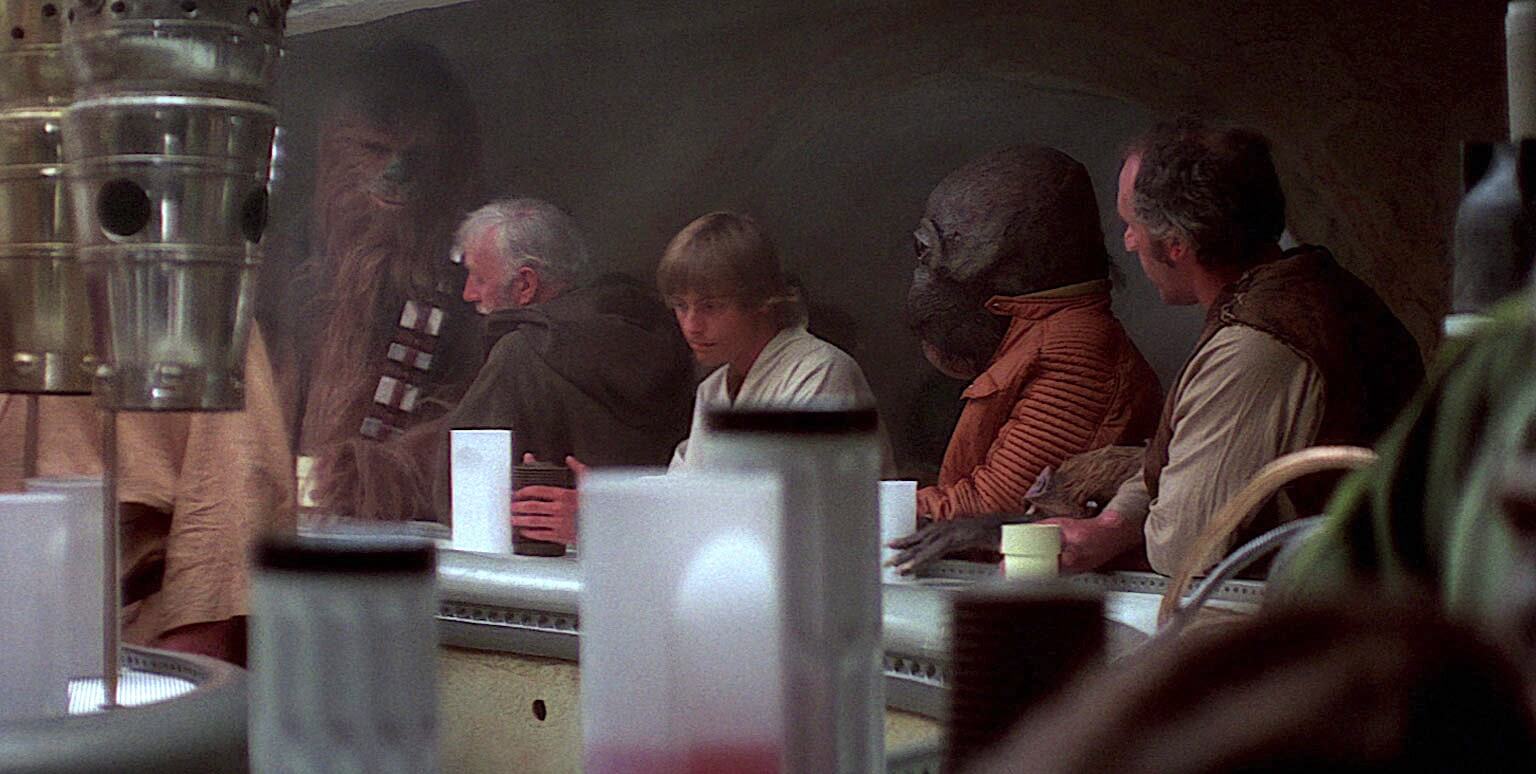
Luke has crossed the threshold into adventure
For Luke Skywalker, this is the part of the movie where he meets Han and Chewbacca. He gets into a bar fight. He starts learning how to use his lightsaber. He "goes" into space on his quest.
For Batman, this section of the journey is more of a "why things will become difficult." (another common phrase used to describe sequence 3).
He "goes" to Hong Kong to extradite the criminal, Lao. He thinks it will be easy to hand the task of protecting Gotham over to DA Harvey Dent...
But the Joker has other ideas. He crashes the Dent fundraiser, starts killing, and threatens to kill until Batman is unmasked.
Different stories handle the section of the script outline differently, but the idea is that these are the first steps into the journey.
Batman was always a crime fighter, but now he's trying to fight a different kind of criminal, with new and higher personal stakes.
Tip: Try seeing your story outline template as a worksheet where you can fill in ideas about what section might be. You may find some new ideas come to you in that process.
Related Posts
a story outline that works
6. The Road of Trials
For there to be a story, reaching the objective has to be hard.
Upon crossing the threshold in sequence three and into act two, our protagonist will face a lot of crazy new challenges. It might take a little getting used to this new world.
By sequence four, it's time to focus again on what we came here for.
More exactly, to search for it. This section is the main characters first real attempt to accomplish their goal. In the Hero’s Journey this could be “the road of trials”.
Which means this is when you’ll pack your story outline template with tons of set pieces.
I think this section is best understood with examples.
In Star Wars it becomes the search for Princess Leia and a way off the Death Star.
Batman is searching for a way to stop the Joker. This is where Alfred will tell him "Some men just want to watch the world burn".
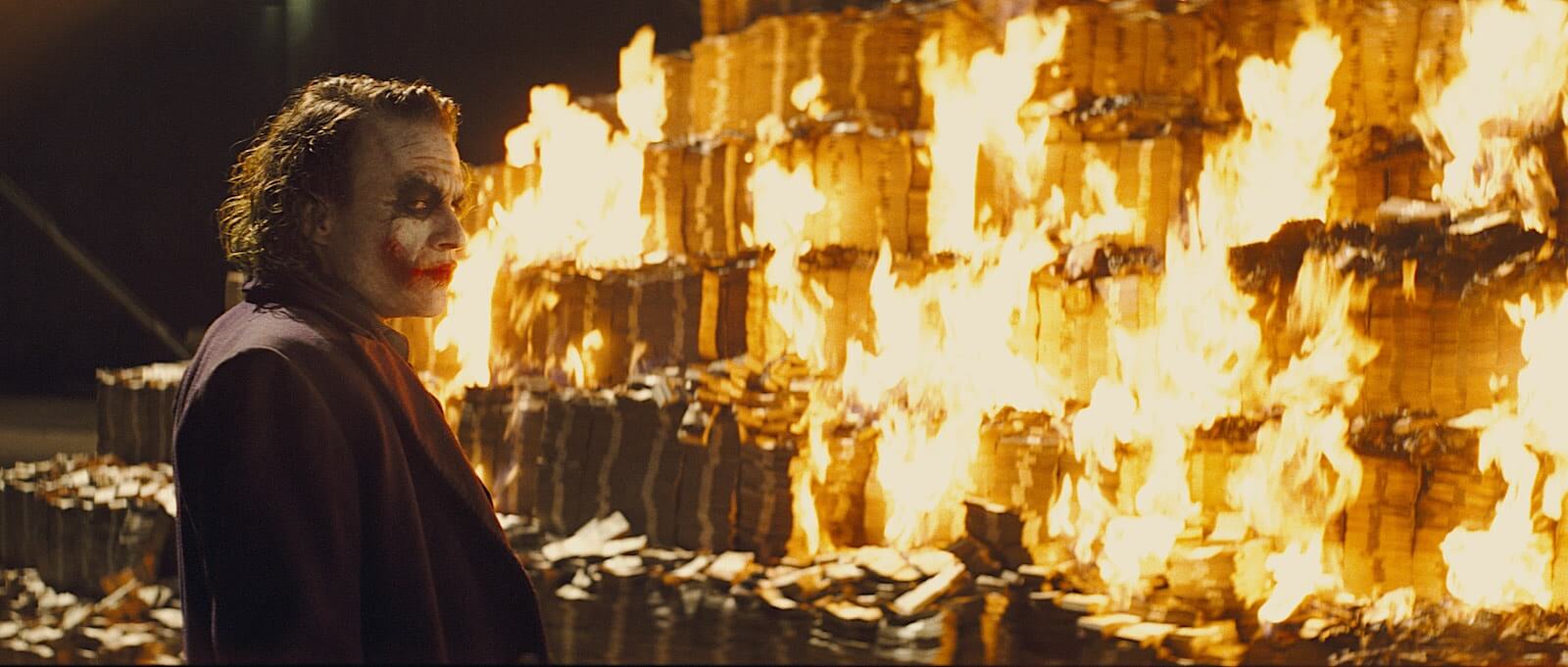
Relevant!
FIRST ASSAULT ON THE MAIN TENSION
Bruce decides that he must end Batman. He plans to come forward to end the Joker's killing spree. Ready to hand the city over to Harvey Dent's form of law enforcement.
He comes to this conclusion with another memorable line of dialogue "I know what I have to become to defeat him".
(Bruce won't become that. For now...)
Side note: one reason certain moments of dialogue like these became so memorable is that they put a button on a point of the story outline template.
"I want to learn the ways of the force and become a Jedi like my father."
"We're not in Kansas anymore."
"We'll always have Paris."
These lines and countless others are defining plot moments. They are memorable because they accompanied or emphasized a major turn in the story.
People often make the mistake of thinking it was the phrasing, or the line of dialogue itself that made them feel something.
It wasn’t. It was the execution of the story outline.
The search section leads us to...
writing a story outline
7. The midpoint
At the midpoint of the story outline template is at 6’o’clock on the story circle. Our character finds something here. It's not necessarily what they set out to find.
It may be a humbling lesson they learn as they failed in their first attempt to win their ultimate goal.
Sometimes referred to as "the belly of the whale". The adventure of act two has taken a toll. Now that we're halfway done, our character has been swallowed whole. Think about Luke and friends in the Death Star trash compactor.
He's got the Princess, but they're all about to get squished and die!
This is better seen as a turning point in the story outline.
One story has ended here, and a new one is about to begin. Luke's quest to find the princess is complete. A new quest, a secondary and larger quest, has begun.
This all takes hold in the next sequence:
story outline
8. The meeting with the Goddess
This sequence has an important job. It has to provide a jolt to carry us through the extra long second act.
We're halfway in, we've met and dealt with some of the main tension, embarking on the second half of the journey.
We need some help.
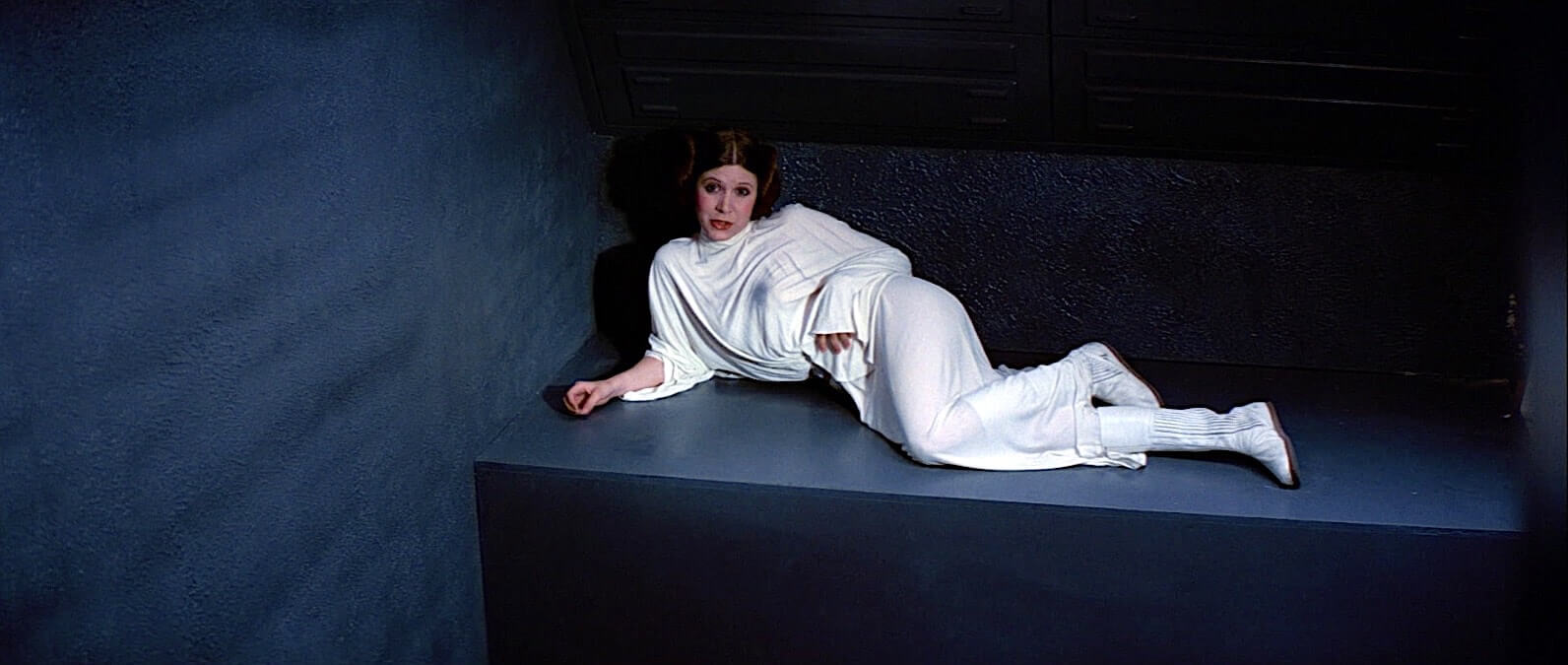
Aren’t you a little short for a story outline?
Writers often turn to a new character here for help. Campbell calls it the meeting with the goddess, and often in ancient myth a hero would actually meet a goddess here.
Certainly when Han and Luke find Princess Leia, it is traditional “meeting with the goddess” timing, and she takes over the story for a bit.
That does not need to be the case. Let's take a different, more modern example of great storytelling. William Goldman's screenplay for Stephen King's Misery.
At the midpoint, all hope seems lost for protagonist Paul Sheldon (James Caan). He has made an attempt to escape and failed. Now what?
Now we follow a character on the outside. Buster (Richard Farnsworth) who is looking into some of the unconnected dots of Paul Sheldon's disappearance.
Buster's quest proves fruitless. But it helps in a very important way. It gives the second act a much-needed booster.
In The Dark Knight, Harvey Dent subverts expectations and claims he is Batman. This sets up a trap for the Joker.
The rest of the sequence plays out mostly in action, as the Joker attempts to kill Harvey, and Batman ultimately catches him.
In an interrogation scene, the Joker pushes Batman near to his breaking point on his personal code and rules.
The sequence ends with the Joker revealing to Batman that both Rachel and Harvey are trapped, and he can save only one...
how to write a story outline
9. Final Assault
Our hero found something in the midpoint, at the start of sequence 5. Now our hero takes that something, whatever it is.
A golden fleece, a sword. In classical mythology, it's something of this nature.
That's why Dan Harmon's story circle refers to this step as "take."
Do they actually have to take something they found?
No. But it's good to know the basic concept behind the step so you can elaborate in your own way.
The “take” step is about going up against the main tension once and for all. For all the marbles, so to speak.
Next time you go see a tentpole action-adventure movie, take note of how there is often a major battle around the end of act two that is NOT the final battle.
This is often the 6th sequence. The crossing of the return threshold into act 3.
And it leads to what we call a 'false resolution'. It's false because the movie isn't over yet.
But we're getting ahead of ourselves.
TAKE OR "THE MAGIC FLIGHT"
In Star Wars you could say this is where Luke and Han 'take' the princess off the death star.
The end of the sequence (and act) we're building to is the self-sacrifice and loss of Obi-Wan Kenobi.
So going beyond the obvious and physical, what did Luke Skywalker really "take" from the death star experience?
What was the moment that started to define him in a new way?
Luke stares down death in this sequence. His "take away" is that he can survive. He's come out of the Death Star stronger, and ready to take on bigger challenges.
Batman also suffers a major loss. He chooses to save Rachel, but the Joker tricked him and he gets to what's left of Harvey. Rachel dies.
The Joker starts creating chaos on Gotham with his threat that if a particular man isn't killed in one hour he'll blow up a random hospital.
The threat of the Joker's crime has become that he will turn all of Gotham into a criminal. Bruce Wayne decides to save Reese, but as Bruce, not Batman. The "take away" for Bruce? That he has to be Batman.
In either instance, these lessons propel the protagonist into their third act and step 7…
writing a story outline
10. Act three: resolution
Once again, you don't need to take the name of the step too literally.
The character doesn't need to return anywhere physically, so long as they are returning to something.
It could be a return to face down the primary antagonist. A return to their old job.
If act two was a journey into the 'upside down' state, then act three is the resurfacing in the normal world. Our character, having been through the adventure, has learned.
The "took" what they "found" on their journey. And now they are back.
In classical mythology, a hero would often leave their home to find something, and bring it back. Whatever they brought back would be a "boon" to their people.
There is even a step in Campbell's Hero’s Journey called "the ultimate boon".
Okay but let's talk about writing scripts again. What does this return step look like in the movies we've been discussing?
For Batman, it's a return to fighting crime but now with a new approach. He uses the 'tool' of his super surveillance without batting an eye.
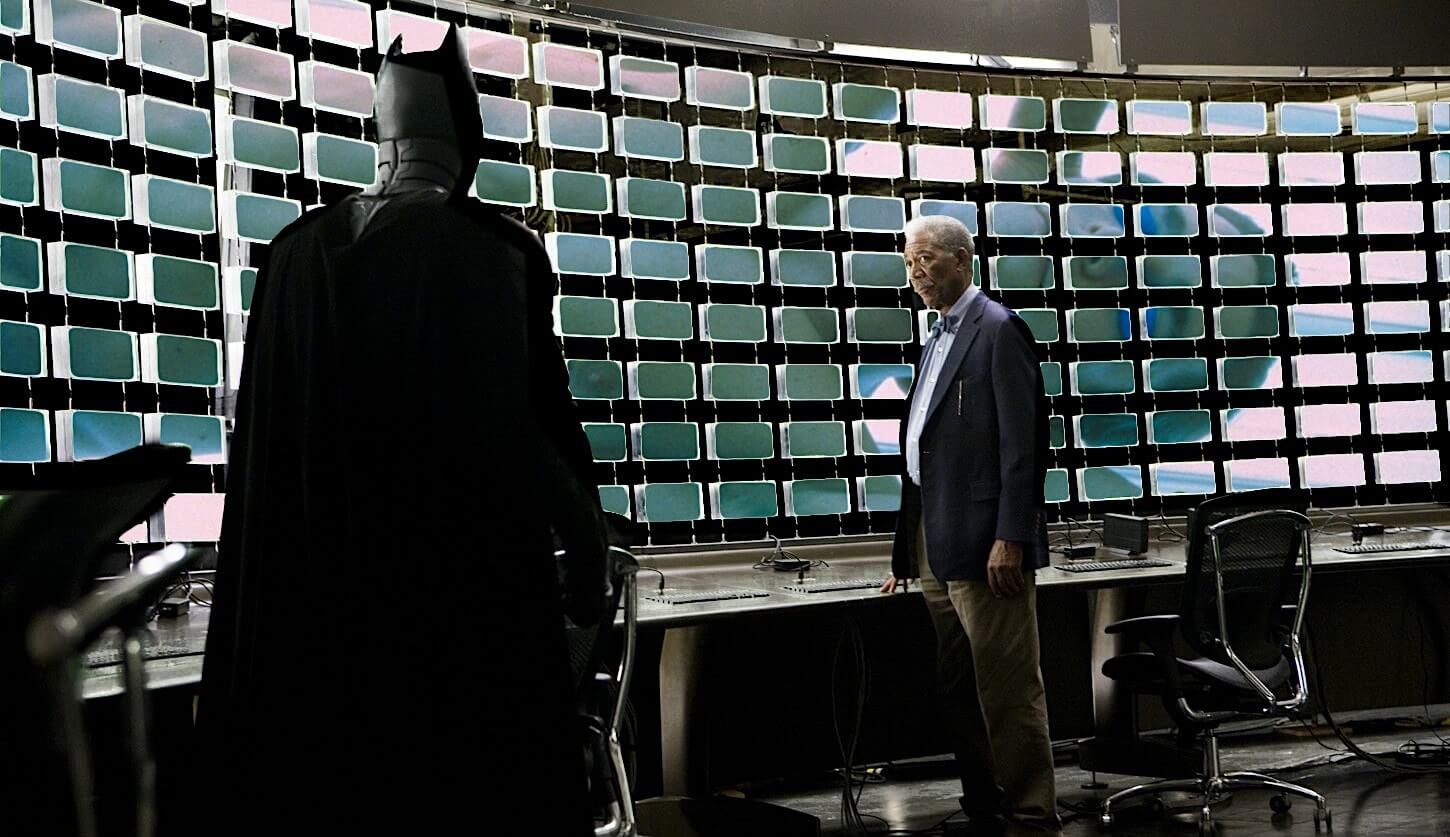
Batman spying on everyone...
ATONEMENT WITH THE FATHER
The word atonement is literally at-one-ment.
Atoning with the father, in mythological terms, is meeting your maker.
Coming to terms with your mortality.
Batman does catch the joker and seems to defeat him.
And Joker gives one of those classic "we are not so different, you and I" speeches that villains often give heroes.
The people of Gotham opt not to kill one another on their ferries. All seems concluded...
Hey so remember that idea of the "false resolution". Well, this is it.
We might think for a moment, that whatever showdown took place was final. The state of things at the end of act two drove our character to this final act that would set things straight.
Not quite.
Luke and Han defeated the tie fighters during their escape from the Death Star. Moments later we learn that Darth Vader "let them escape" and planted a tracking device on their ship.
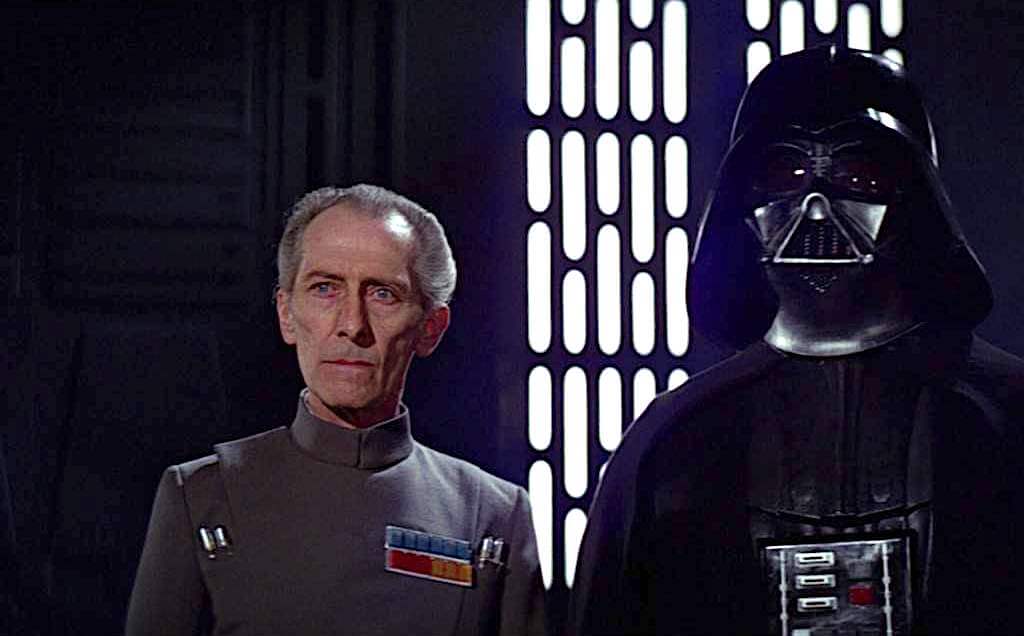
arkin and Vader let the heroes escape.
The story isn't over. Leia even says "it's not over yet."
The Joker has poisoned Harvey's mind and turned him into a killer. Just when Batman has defeated him he reveals this to Batman in a classic "we are not so different, you and I" type monologue.
This return to safety, or normalcy, but under the guise of a false resolution leads us to…
writing an outline
11. The twist
The twist isn't always a record scratch "whoa he IS Tyler Durden" kind of twist.
The twist reveals that the resolution was indeed false.
Batman did not defeat evil. He did not save Gotham. There is still one task left.
Luke must face down the Death Star against incredible odds. Obi-Wan is dead, Han Solo has decided to take his money and run.
The twist? Obi-wan is still speaking to Luke through the force.
For Batman and Gotham? That evil still lurks. The joker has turned Harvey mad, and he's been on a killing spree.
In every story there is still something very important and very difficult left to do. Something that will require
screenplay outline
12. The master of two worlds
At step one all we had was a "you", in what we described as a status quo.
For our story to be complete, a change must occur. An important one.
For Luke, this change is putting away his 'targeting computer' and trusting the force. The technology that has come to represent evil (Vader, the Death Star) is rejected.
Luke relies on faith.
And his faith is rewarded. Not only does he make the shot, but Han bursts out of nowhere to help him in a desperate moment.
Luke was never alone. He had the force, and he had his friend.
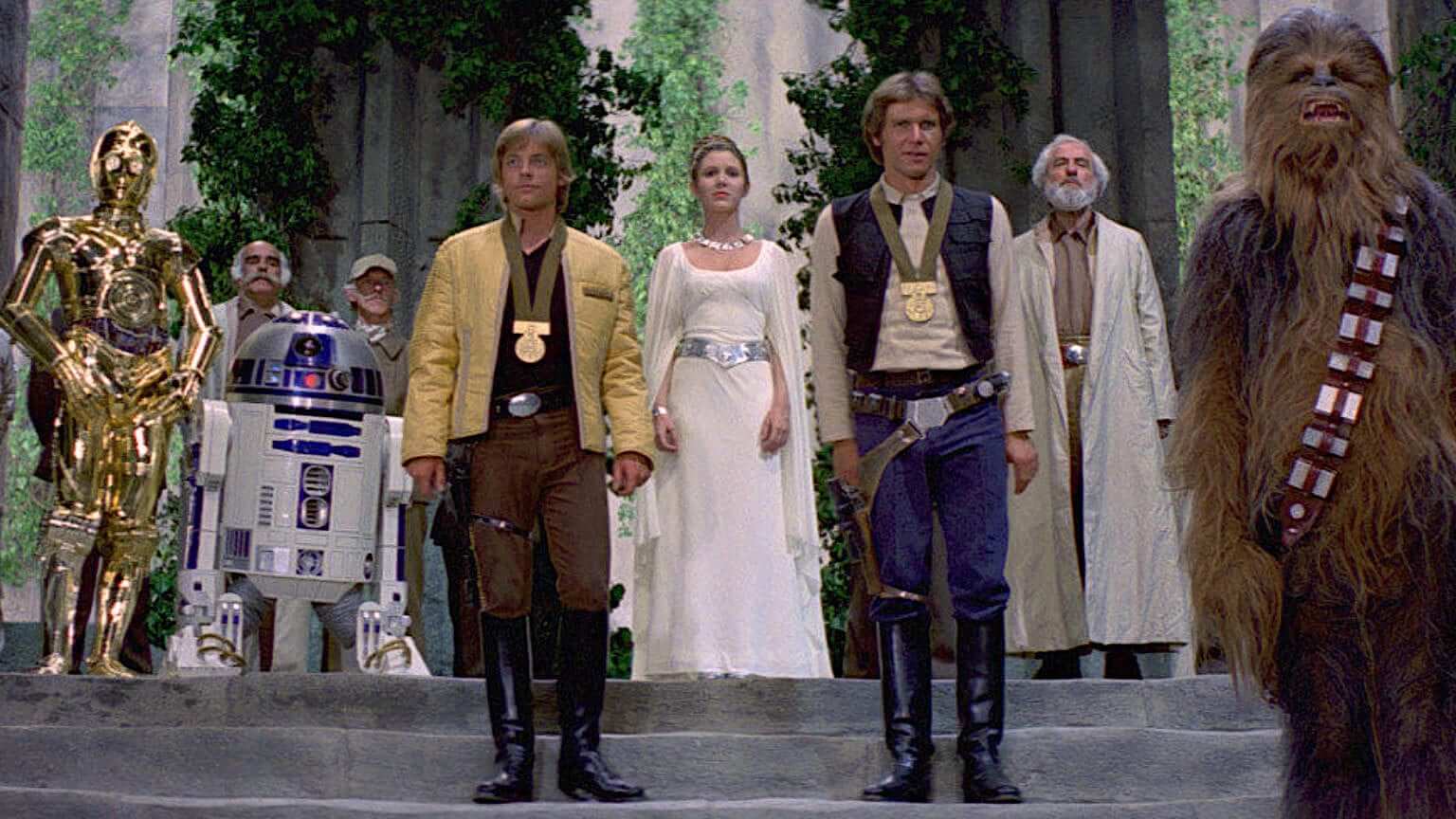
Not all hero’s quests end this well.
How about a not so happy ending?
Batman rushes to see what Harvey is up to only to find the disfigured "two-face" now threatening to kill a defenseless boy.
Harvey Dent, the man who Bruce hoped would render his Batman identity obsolete, is now a criminal. The very worst kind, at that.
The 'war for Gotham’s soul' seems lost. Gotham's "white knight" of Harvey Dent is corrupt at the hands of the Joker.
Even worse? To save the boy, Batman breaks his one sacred rule. He charges at Harvey knocking him down and killing him.
Can he save Gotham from what Harvey became?
He can. By taking the blame for Harvey's murders. Batman has changed and become...
CHANGE YOU CAN BELIEVE IN
Why does that moment resonate? Why is it so powerful?
Because Batman was truly forced to change.
A good story must reflect true change in the protagonist. They must be pushed to the brink, and change is the only way to survive.
That's the potential power of plotting your ideas carefully along the steps all great stories follow.
Batman’s journey inverts elements of the Heroes Quest. It’s proof that following the formula doesn’t mean your story, or take, need be formulaic.
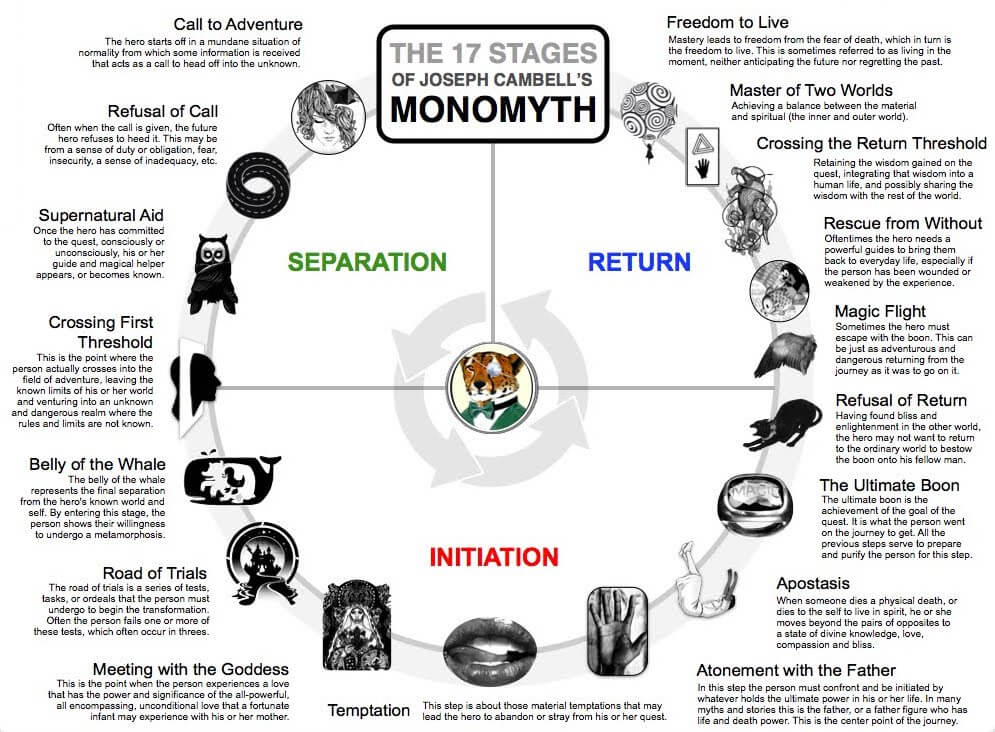
Campbell’s Hero’s Journey, counter clockwise on a circle.
IT ALL COMES BACK TO JOSEPH CAMPBELL
This is another take on the story circle concept. From the original source itself, Joseph Campbell.
Many of the sections of Campbell’s monomyth apply to this final section, and don’t always have to go in the order above.
One phrase and section I find very useful when thinking about the story outline is ‘the master of two worlds’.
Why?
Because the journey has been, without a fail, a journey into another world. The character who returns ‘changed’ after the end of every section must be now a master of two worlds.
But the real meaning behind the ‘two worlds’? Usually it indicates that the character has confronted death, and come out somehow immortal.
We’re getting into some next level story philosophy stuff- but keep that in mind next time you watch a movie, or think about a good story.
Related Posts
up next
Tips on Writing Better Dialogue
From "The Epic of Gilgamesh" to Star Wars to The Dark Knight, the steps and the story outline are the same. Of course there are no steadfast rules, but many times, outlines do help.
As you use the story outline, and break down other stories with it, you’ll begin to see that it applies to a lot more than movies and screenplays. Once you have your story outline down, check out our next post on writing better dialogue.
